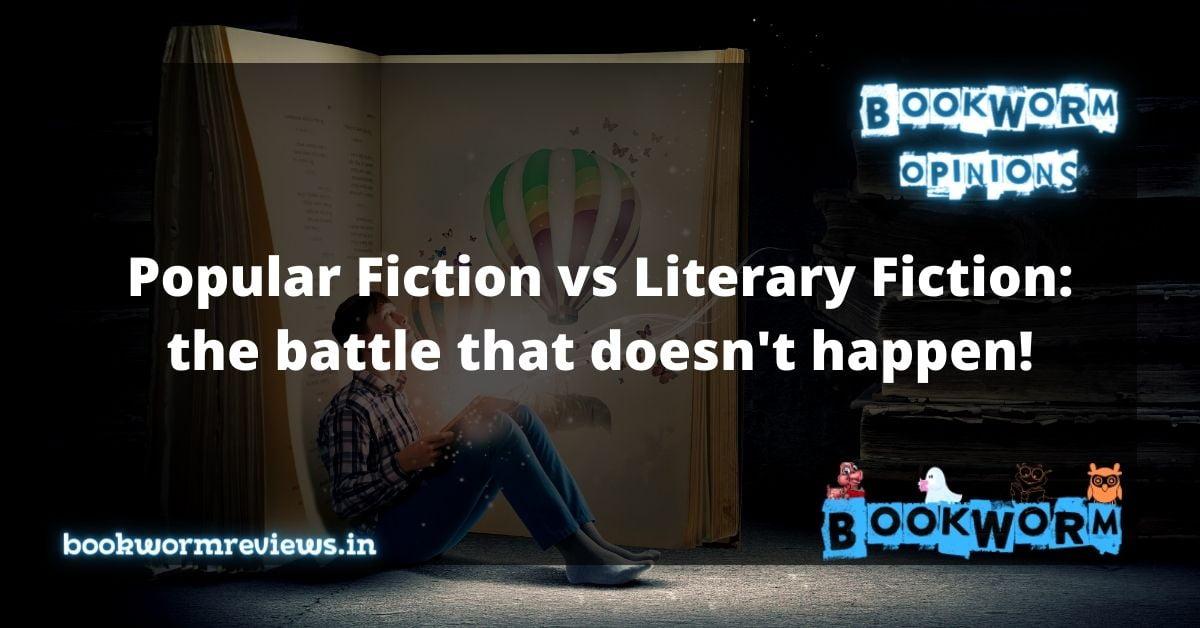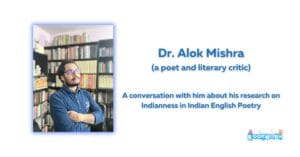It is difficult to define literary fiction. At the same time, attempts to define popular fiction (unlike what many may have tried to claim while dismissing anything popular) may seem gaudy on the part of those who have set themselves within the frontiers of their whims about fiction. Well, the world doesn’t spin because we believe something or not. It takes its course… likewise, readers read what they like and disregard what they don’t. Papers, articles, forum discussions and panels loaded with self-loathing or self-lionising literary personalities might not be enough to cut it. Readers are the boss when it comes down to readers vs the novelists! And then, coming to this debate, popular fiction vs literary fiction, who will decide the limits and parameters? Yes, it’s a reader!
While agreeing that literature is a diverse and dynamic realm, catering to a wide range of readers with varying tastes and preferences, we also have to accept that literature does keep evolving from time to time. It may take several forms and hide several patterns within the abyss, the vacuum that it is, the real with no boundaries! Outrightly unjust and very surprisingly, the decision to ‘mark’ a book literary, critical, artistically perfect and otherwise has come to a select few – so-called critics, contrary to those who should justly keep it, the readers. The literary landscape has become a playground for those who want to influence, pervert and subvert other domains by being in power in the world of literature. Cocktails of power weave the ‘mock’tails of literature (if you get the meaning right)!
And Indian literature (especially in English) is no exception! Within this landscape, certain authors, like Vikram Seth, Arundhati Roy, Amitav Ghosh, and Jhumpa Lahiri, have gained acclaim for their serious novels. While their works have found a dedicated audience among academia and literary circles, they have often struggled to achieve the same level of recognition and popularity among the broader spectrum of readers. What are the reasons? What are some drawbacks in their works that cannot appeal alike to a mass reader base and only certain elite section of readers are pulled by the ‘charm’ critics claim to be literary merit? What’s the reason The Ministry of Utmost Happiness by Arundhati Roy finds only 3 readers compared to Bhagat’s mass-selling One Indian Girl? What are the reasons that Gun Island by Amitav Ghosh has only 2 readers compared to 98 claimed by novels like Shiva Trilogy by Amish Tripathi? In the article today, I will try to explore the limitations that define these elite fiction authors’ works. And not only sometimes, these authors try to defy the mass reader base all the time – almost like Bollywood arrogant producers, directors and actors saying the Indian movie lovers – what halla-gulla if you don’t like a movie, just don’t watch! Who cares!
1. Accessibility and Engaging Narratives – we defy 10000 for 20, who the hell you are?
Serious novels (or a few may call them literary fiction) look good from a distance. People love talking about them, discussing them when they sit with black coffee in their hands or sit on cosy chairs on the grand stages of literary festivals. However, seldom one likes to read them (talking about the general public). And the one key aspect where serious novels may fall behind popular fiction is in terms of accessibility and engaging narratives. While ‘serious’ novels are often supposed to tackle complex themes and delve into intricate storytelling, they casually prioritise intellectual depth over immediate readability. In simple terms, these ‘serious’ novelists believe that betraying societies and communities is far simpler than betraying a massive community of ‘readers’. As a result, that massive base of readers often finds it challenging to connect with the narrative and characters. Supposedly the thing that should appeal to communities and societies is far less appealing to individuals from that community or society. It is intricate rather than something one could relate to. In contrast, the so-called popular fiction offers more straightforward and fast-paced plots, which naturally reach and resonate with people at large. For instance, Dan Brown’s The Da Vinci Code captivated millions of readers with its thrilling and accessible storytelling, making it a global phenomenon. Can you call it causal or non-serious fiction? Do it at your own risk!
2. Emotional Resonance and Relatability – agenda, propaganda, virtue-signalling and blah-blah but NO STORY!
This section wrong. That part not good. This is the best. That is the worst. You will find plenty of this, that, these and those in these ‘serious’ works of ‘literary’ fiction, let me specify with these days. On the other hand, so-called popular fiction often excels at evoking powerful emotions and creating relatable characters with whom readers can connect on a personal level. These novels tend to focus on universal themes such as love, friendship, and self-discovery. Isn’t that good about books? In contrast, serious novels may prioritise exploring complex social and political issues, often sacrificing emotional resonance. I won’t see something that doesn’t entice me! Let alone reading a novel that doesn’t inspire me emotionally! However, these ‘authors,’ ‘critics,’ and academic bosses have found a turn-around to ‘compel’ readers to read such works of ‘serious’ importance. They have put such books in the syllabuses of universities and colleges. Where will young readers go now? While I am not against classics which do have value, I am totally against contemporary fiction that is lauded with cosmetic cheers for having so and so but lacks the basic qualities that a novel must have! And that may be a reason behind contemporary classics failing to resonate with readers while books like Nicholas Sparks’ “The Notebook” have touched the hearts of countless readers with their poignant and relatable portrayal of love, highlighting the appeal of emotionally-driven narratives.
3. Marketability and Advertising – awards, eco chambers, critics, and an ecosystem that decides – who knows what goes behind the curtains?
Chetan Bhagat puts a full-page ad in almost every national newspaper for his novel Half-Girlfriend. Amish does many ad campaigns. And so many authors, in the so-called popular fiction bracket, do the same. However, elite authors and their publishers have very different marketing campaigns. They don’t even aim to reach common people. For them, it’s the ecosystem of literary influencers that does it. In other words, the literary ecosystem plays a crucial role in determining the success of a book. Op-ed articles, big political figures endorsing books, photo sessions with leading industrialists and then a very subtle campaign – even controversy of some kind – followed by a prize of ‘repute’ or some prize announced and delivered in no time. Those who watch and follow football can understand it if I mention some Dubai d’Or prize that Ronaldo often received! On one side, it is those who write popular fiction, they often benefit from robust marketing campaigns, extensive advertising, and prominent placement in bookstores. These efforts generate visibility and help attract a wider readership. And in most cases, readers receive such novels well because of the emotional connection. On the other side, it is those elites who write so-called serious novels, they don’t even attempt to reach the masses because they find other shortcuts, and cut many corners to slide into the colleges and universities libraries with heavy bulk orders, awards and inductions in syllabuses… they are rather brutal and find ways to compel a few thousand readers to read their books… however, in most of the cases, they fail in reaching the masses (and they succeed in this failure).
What experts observe:
To further support these observations, we can turn to expert opinions within the literary field.
- In an interview with The Guardian, literary critic James Wood expressed his view on serious novels, stating, “There is a risk of mistaking the world of literary fiction for the world of novels in general. It’s a rarefied and self-regarding world, which is essentially urban, upper-middle-class, and metropolitan.”
- Similarly, in an article for The New Yorker, Laura Miller observed that popular fiction tends to provide readers with a sense of escapism and entertainment, stating, “What we find in popular fiction is less reflection of ourselves than projection of our fantasies and aspirations.”
Conclusion:
What can I say? It is often the readers vs the novelists. And in the case of battles by elite authors, they don’t even put their case. Do they care about royalties? Certainly not! They have other means to run their kitchens and ensure a luxurious future for their kids. On the other hand, so-called popular fiction authors do everything in their hands to reach their audience and sell their literature. At least, in most cases, they are selling their stories and not their conscience. So, you can abuse Chetan Bhagat as much as you can… he writes something to entertain us. Unlike those who are self-entitled guardians of everything else on the earth and reserve the right to lecture the planet on many issues. However, ask them to offer a story that can engage readers for a few hours, they will ‘pass’ the test.
AM for BookWorm Reviews




